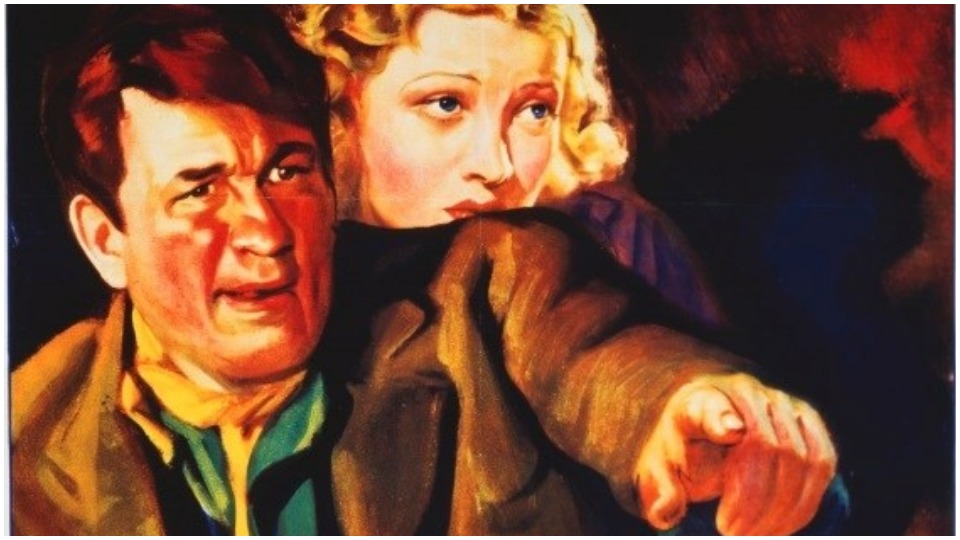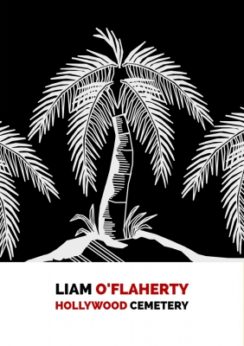
Published in London in 1935, but never re-issued until now, Hollywood Cemetery is one of five novels by Liam O’Flaherty banned by the Irish State under the Censorship Act. In the 1930s, O’Flaherty was one of Ireland’s most censored authors; in fact, his Galway novel The House of Gold was the very first book banned there in 1929.
Hollywood Cemetery departs from his more familiar Irish settings of the rural West of Ireland or Dublin’s slums. It is O’Flaherty’s fictionalized satirical account of his encounter with an industry that embodies the American Way of Life and exposes the core of Hollywood film-making.
For readers of People’s World, there is a very special aspect of interest to this, O’Flaherty’s only U.S.-based novel: He puts this paper’s precursor, the Daily Worker (called Proletarian Power in the novel), at the moral center, and it is from this paper’s analysis that the novel takes its name. Liam O’Flaherty’s brother Tom was a daily columnist of the Daily Worker from the start, and so reference to the paper of the working class was no accident.
As the reader is reminded in Hollywood Cemetery, the American film industry had similar “decency” stipulations to those of the Irish Censorship Board, under its new Production Code Administration. Both bodies attacked realist representation. Predictably, this resulted in anti-realistic idylls that had nothing whatever to do with the reality of people’s lives. While the rest of Hollywood was staggering under the clerical attack on “indecent” films, Mortimer, the fictional film producer of Flaherty’s novel, had hurriedly produced a picture called Little Virgin, which was a colossal success. “Within three months, it had flooded all the capitals of the world, outside of pagan Moscow, with the tears of the multitude. It had poured a profit of four million dollars into the bank account of World Films Inc.”
Into this general context, O’Flaherty sets his satire. Based on his observations in the filming of his novel The Informer, he exposes how Hollywood operates, the allure of incredible salaries and resulting prostitution of its employees for money. O’Flaherty appears of sorts in the character of Brian Carey. This modern Irish author is part of a beauty-spotting operation in Ireland along with a U.S. film crew, to seek out a glamour girl suitable for the filming of his story “The Emigrant.” This achieved, the idea of a realist film about poverty in Ireland is speedily relinquished in favor of Hollywood illusion. Hollywood Cemetery is both hilarious and frightening.
Hollywood acts as colonizer, just as American slave owners, or British Anglicizers of Irish names, adapt the names of their underlings to perceived U.S., or British, tastes. Thus, Biddy Murphy becomes Angela Devlin. Such use of U.S.-friendly aliases for actors/musicians from Mexico, Puerto Rico, etc., continues to this day. In fact, O’Flaherty unerringly pinpoints such cornerstone aspects of the Hollywood way, then in its infancy. Apart from the imposition of Hollywood-friendly names and appearances, he exposes the use of cosmetic surgery, drugs, screenplay factories, power battles, and sexual harassment as intrinsic to the industry. While these are now slowly becoming more obvious to the public, along with their toll on the mental health of those involved, O’Flaherty recognizes them clearly and exposes their early roots.
Here, it is a struggle to hold on to one’s own identity and integrity. Power and money swallow everything, without regard for human life. Apart from the narrator, who frequently ironizes himself, only the Communist Party newspaper, Proletarian Power, reveals this: “Hollywood is a cemetery where the remains of present-day bourgeois intellectuals are buried, after being fattened like the sacrificial victims in ancient Mexico on enormous salaries, only to have their hearts plucked out and eaten by the Moguls of modern mammon.”
 This is what O’Flaherty must have experienced with the filming of his own novel The Informer by his distant cousin John Ford. Instead of staying true to his original, set in the slums of Dublin, Hollywood’s celluloid manifestations of his two central female characters are sophisticated, elegant, and photogenic, mocking their originals. Instead of making a film based on the Dublin working-class experience, Ford and his script-writer Dudley Nichols, along with the entire machinery, cleansed the novel of its deeper political texture to make a film that presents stereotypes as seen by those who have no interest in the inhabitants of tenements beyond their monetary value.
This is what O’Flaherty must have experienced with the filming of his own novel The Informer by his distant cousin John Ford. Instead of staying true to his original, set in the slums of Dublin, Hollywood’s celluloid manifestations of his two central female characters are sophisticated, elegant, and photogenic, mocking their originals. Instead of making a film based on the Dublin working-class experience, Ford and his script-writer Dudley Nichols, along with the entire machinery, cleansed the novel of its deeper political texture to make a film that presents stereotypes as seen by those who have no interest in the inhabitants of tenements beyond their monetary value.
While in Hollywood, O’Flaherty began thinking about his masterpiece, the historical novel Famine. This novel is the first major artistic grappling in Ireland with the nation’s 19th-century colonial holocaust. O’Flaherty presents a differentiated panorama of the starving peasantry, the famine-profiteering gombeen men, clergy with and without a spine, and deeply inhuman British colonialists.
O’Flaherty hoped that Ford would make Famine into a film after it appeared in 1937. Had Ford taken on this material, and resolutely portrayed this liquidation of a large part of the Irish nation, along with its resistance, it could have made a significant contribution to a cultural acknowledgment of colonialism in all its inhumanity. This did not happen and Hollywood Cemetery is a partial answer as to why not.
Fightback, the assertion of humanity even when confronted with great adversity, is always a theme in O’Flaherty’s work. Significantly, the two Irish characters in Hollywood Cemetery rebel. The novel also features women whose intelligence flies in the face of the gender role assigned to them by Hollywood. A gender-fluid character is another aspect to the novel in which O’Flaherty seems to anticipate our own times and is surely far ahead of his own.
O’Flaherty had started the book while still in the U.S. and finished it in France during the summer of 1935. His first draft was returned to him by his London publisher Gollancz as too outspoken. Following its revision, it was finally published on November 18, 1935. Nuascéalta’s republication of Hollywood Cemetery over eighty years later is a major cultural event. It is available from Amazon and online.
Editor’s note: Readers may also wish to read something about the background to Man of Aran, a documentary about Western Ireland from the same period.
Hollywood Cemetery
By Liam O’Flaherty
Nuascéalta
269 pp. / 2019 (1935)












Comments